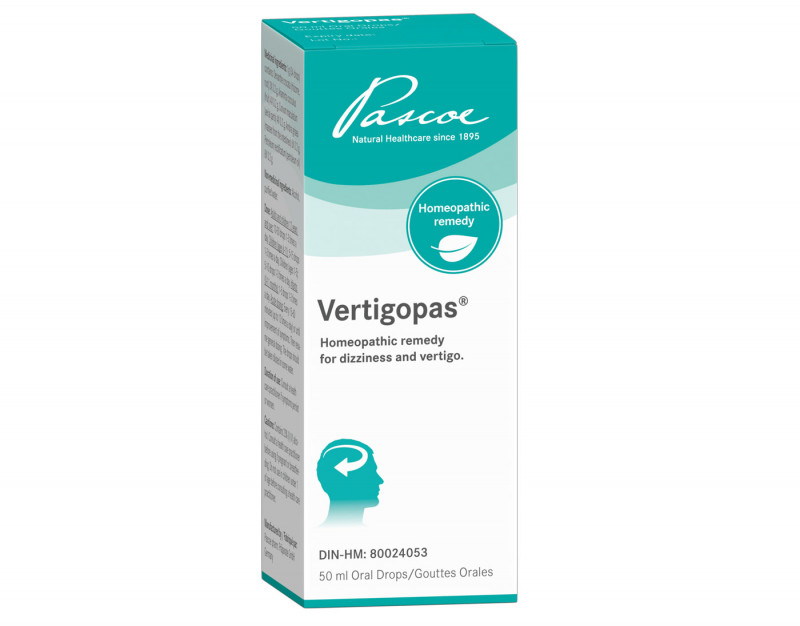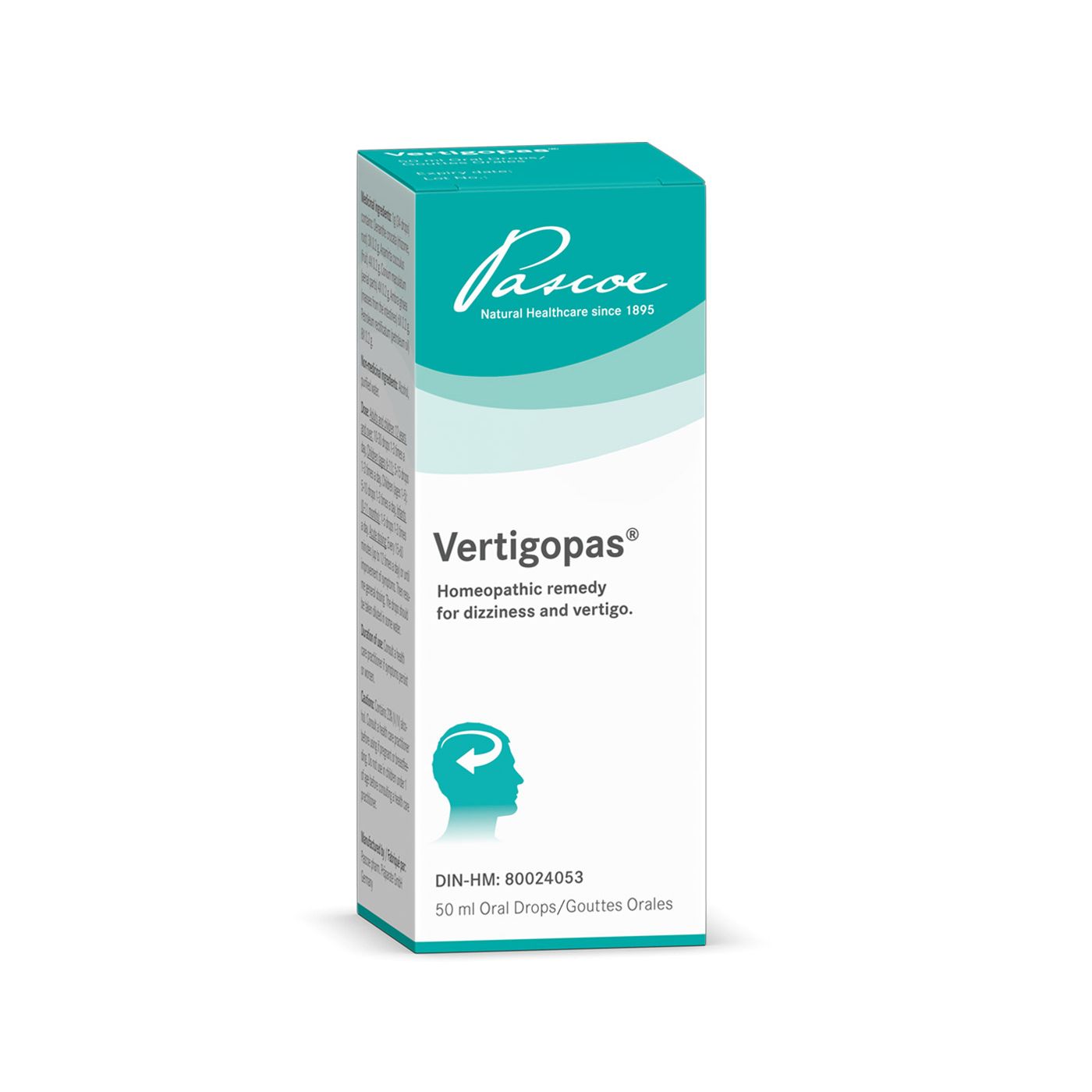

Vertige
Qu’est-ce que le vertige?
Les vertiges sont un malaise qui affecte l’équilibre ou l’orientation spatiale. Il s’agit, en effet, d’une sensation de rotation, de balancement ou d’inconscience imminente. La personne affectée a l’impression que tout tourne autour d’elle. Ce phénomène, appelé vertige par les médecins, est souvent le résultat d’informations contradictoires provenant des organes sensoriels responsables de la sensation d’équilibre, c’est-à-dire les yeux, les oreilles et les muscles. Cela peut se produire, par exemple, lors d’un trajet en carrousel très rapide. Les yeux rapportent une rotation très rapide, tandis que l’organe d’équilibre dans l’oreille interne ne détecte pas de changement de mouvement dû à la rotation constante. Toutefois, il peut aussi avoir d’autres causes ou cela peut être symptomatique d’autres maladies. Les facteurs déclencheurs du vertige sont, entre autres, les voyages en voiture ou en bateau, une augmentation ou une baisse de la tension, le blocage des vertèbres cervicales, l’artériosclérose ou encore les troubles de l’oreille interne. Souvent, le vertige s’accompagne de somnolence et d’acouphènes, mais il peut aussi provoquer des nausées et des vomissements.
Quels sont les différents types de vertige?
Tous les types de vertige ne sont pas égaux. Certains types de vertige proviennent de causes particulières. Pour en déterminer la cause, il est donc utile de caractériser le type de vertige:
On distingue le vertige périphérique ou directionnel et le vertige central ou non-directionnel. Avec le vertige périphérique (vertige vestibulaire), les personnes atteintes perçoivent par exemple l’illusion du mouvement. Cela va dans un sens précis.
Les causes du vertige périphérique sont habituellement liées à l’organe d’équilibre (c.-à-d. dans l’oreille) ou au système nerveux central.
Les formes périphériques du vertige se distinguent en fonction de la façon dont le vertige est perçu:
- vertige rotatif (comme sur un carrousel)
- vertige postural (vertige postural visuel – principalement sous forme de mal des transports, de vertige postural phobique ou de vertige dû à un surmenage, surtout dans des situations stressantes)
- sensation de flottement (sentiment de flottement vers le haut et vers le bas comme dans un ascenseur)
Les types de vertiges peuvent également être classés en fonction de leur facteur déclencheur:
- le mal des transports, le vertige positionnel (dû aux mouvements de la tête ou au fait de s’allonger)
- vertige orthostatique (en raison d’un réveil trop rapide)
- mal des transports, kinétose (est provoquée par l’utilisation d’un moyen de transport)
Le vertige central est plus difficile à caractériser – c’est «l’étrange sensation dans la tête», le sentiment de s’évanouir, le sentiment d’incertitude lorsque vous marchez, l’incertitude spatiale. Il peut survenir soudainement au cours d’arythmies cardiaques ou de mouvements de la tête (vertige positionnel) sous forme de vertige et disparaître à nouveau rapidement, ou être présent en permanence. Le vertige central persistant est souvent associé à la prise de certains médicaments, à des problèmes psychologiques, aux fluctuations de la tension artérielle et à des troubles du système nerveux central.
Quelle est l’origine du vertige et quelles en sont les causes?
Notre sens de l’équilibre est dans l’oreille. Les trois arcades de l’appareil vestibulaire (= organe d’équilibre) dans l’oreille interne sont responsables de la détection des mouvements de rotation dans l’espace. La cause du vertige se trouve donc directement dans l’oreille, c’est-à-dire qu’elle est causée par des stimuli ou des maladies de l’oreille interne, du labyrinthe ou du nerf vestibulaire. C’est ce qu’on appelle le vertige vestibulaire.
Cependant, la cause peut aussi être le traitement des stimuli dans le système nerveux central – c’est le cas du mal d’automobile ou du mal des transports.
De plus, il y a ce qu’on appelle le vertige psychogénique, qui résulte souvent du stress ou de la pression psychologique, et il existe des formes de vertige qui ont une cause organique, mais dont la cause n’a rien à voir avec le sens de l’équilibre dans l’oreille.
Quand devriez-vous consulter un médecin pour le vertige?
Les causes du vertige sont très variées. Il existe des types de vertige contre lesquels on ne peut pas faire grand-chose, si ce n’est d’éviter les facteurs déclencheurs ou de suivre certaines règles de base (voir ci-dessous).
Dans certains cas, cependant, le vertige est un symptôme de maladies graves qui doivent être traitées. Assurez-vous d’en déterminer les causes!
Que pouvez-vous faire si vous êtes sujet au vertige?
Si vous êtes sujet au vertige, veillez à avoir un mode de vie équilibré:
- Assurez-vous
- de dormir assez
- de manger régulièrement et de façon saine
- de faire beaucoup d’exercices en plein air
Évitez
- de graves tensions nerveuses
- Stimulez la circulation sanguine dans votre cerveau en
- faisant des exercices de relaxation
- relaxant les muscles de votre cou
Mal des transports – lorsque le voyage devient douloureux
Le mal des transports est aussi connu sous le nom de mal de mer ou de mal de la route. Il est défini comme la nausée accompagnée de vertige et de vomissements provoqués par l’utilisation d’un moyen de transport (tel qu’un autobus, un véhicule ou un bateau). Le mal des transports est causé par l’entrée en conflit des yeux et du sens de l’équilibre dans l’oreille interne : lors d’une croisière par exemple, l’organe d’équilibre perçoit le mouvement des vagues de la mer, tandis que les yeux n’enregistrent aucun mouvement, le navire ne se déplaçant pas par rapport à l’observateur. Cette entrée contradictoire est mal traitée par le cerveau; la réponse est un vertige qui peut même provoquer des vomissements.
Conseils pour lutter contre le mal des transports
- Respirez de l’air frais pendant votre voyage.
- Prenez des pauses et profitez-en pour faire de l’exercice (saut!)
- Asseyez-vous derrière l’essieu avant dans un bus (ainsi, vous ne sentirez pas trop de secousses).
- Regardez vers l’horizon.
- Mangez léger.
- Amusez-vous ou divertissez vos enfants (en devinant les plaques d’immatriculation, «Mon petit œil voit quelque chose»...)
- Buvez beaucoup (de l’eau plate est idéale).
- Ne voyagez pas avec l’estomac vide ou plein.
- Mangez de préférence des aliments légers et digestes dans les heures qui précèdent le voyage.
- Évitez les produits laitiers avant le voyage.
Il existe un remède Pascoe pour cela!
Vertigopas est le traitement homéopathique contre les vertiges.
Vertigo is a type of dizziness that affects balance or spatial orientation, characterized by:
- feelings of spinning
- lightheadedness
- swaying
- inability to stand up and/or walk in a straight line.
Dizziness in vertigo creates an illusion of movement making the world seem to move in ways it is not.


What causes Vertigo?
Vertigo is caused by the result of conflicting information from the sensory organs that contribute to the sensation of balance. These include the eyes, ears, musculature and blood/fluids within the body.
Many common phenomena can trigger this condition. These include:
- Being on a carousel or rollercoaster
- Trips by car or boat
- Disorders of the inner ear (including the semicircular canals)
- Arteriosclerosis (diseases of the arteries)
- Changes in blood pressure or blood flow
- Changes in the spine especially the cervical vertebral discs.
There are many common causes. It is important when developing the treatment for a patient suffering from this condition to understand the cause. Common causes include an underlying physical disorder/condition or a dysfunction in one of the systems that control balance such as the inner ear. Other causes can be more systemic and internal including high blood pressure, multiple sclerosis, a viral infection of the body or ear (vestibular neuritis), irregular heartbeat, migraine-associated, stress, low blood sugar and hypotension (low blood pressure).
How do you treat Vertigo?
Treatment includes vestibular rehabilitation and vestibular rehabilitation exercises focused on the inner ear. Depending on the cause, possible treatments can include neck surgery, regulating blood sugar, certain maneuvers (the Dix-Hallpike maneuver and Epley manoeuvre), viral infection treatment, physical therapy, specific exercises, draining fluid-filled ears and more. Treatment and diagnosis are completed based on clinical practice guidelines. Certain medications may be available depending on the cause. Caution should be taken as they may have side effects. Treatments goals include targeting the symptoms each person is feeling, increasing one’s ability to function and exercise as well as decrease lightheadedness.
Symptoms commonly targeted include:
- Drowsiness,
- Tinnitus (ringing in the ears),
- Nausea,
- Vomiting,
- Nystagmus (irregular eye movements),
- Spinning sensation,
- Lightheadedness,
- Fainting,
- Dizziness
- Ear problems


Treatment is often very challenging and unique to each person who is suffering due to the many different factors contributing to the development of vertigo. It is also important to distinguish between peripheral (directional vertigo) and central (non-directional) vertigo when initiating treatment.
Vertigopas is a homeopathic remedy to relieve symptoms of vertigo and dizziness. It comes in 50 ml drops, creating easy general dosing and acute dosing. Perfect for helping relieve symptoms of dizziness and vertigo on those long summer bus rides or flying through the air to go snowboarding in the Canadian Rockies. Don't let Vertigo stop you from enjoying yourself.


What types of vertigo are there?
There are two main types of vertigo, peripheral vertigo, and central vertigo.
Peripheral Vertigo is related to the vestibular system in the inner ear, which oversees balance. The system ensures we stay steady, balanced & coordinated, by coordinating our eye & postural movements. When this is not functioning properly, it causes vertigo. Peripheral vertigo is related to when the vestibular apparatus is not working optimally our body cannot compensate for our movements causing us to lose our sense of balance.
Resulting in balance disorders, such as:
- wooziness
- lightheadedness
- Drowsiness,
- Nausea
- Vomiting
- And other symptoms
Central Vertigo is the passing or permanent sensation of spatial uncertainty or unsteadiness, this includes the feeling of passing out, lightheadedness, off-balance or the feeling of uncertainty when walking. Central vertigo is commonly described as a "strange feeling in the head".
Permanent central vertigo is associated with:
- Medications
- psychological problems
- Fluctuations in blood pressure
- Low salt
- Head injuries
- Disorders of the central nervous system such as multiple sclerosis.
These conditions will often have nystagmus unrelated to the head position as seen in BPPV. It can also be associated with dehydration or adrenal fatigue (burn out). In these conditions, our bodies can no longer control our internal regulatory systems and classic symptoms, as well as orthostatic hypotension or nystagmus, may result.
What are some other causes of Vertigo?
- Orthostatic Vertigo - Results from changes in blood pressure when we move quickly from sitting to standing. In these cases, the body cannot compensate for these changes quickly enough to stay balanced, changes in heart rate, lightheadedness, & dizziness arise, which can be exacerbated by dehydration.
- Ménière's disease – is caused by a fluid imbalance in the inner ear which causes transient recurrent vertigo attacks of vertigo, dizzy spells, ringing in the ears (tinnitus), and hearing loss or feeling of fullness in the ears.
- Benign Paroxysmal Positional Vertigo (BPPV) - causes symptoms when the head is placed in a certain position, often triggered when a patient is lying down with their head turned to the affected side. Nystagmus will also arise in this position. Specific head movements such as the Dix-Hallpike position will also trigger these symptoms. BPPV results from a dysfunction in either the horizontal or posterior canal of the semicircular canals in the internal ear. One common treatment option for Benign Paroxysmal Positional Vertigo (BPPV) is the Epley maneuver performed by a trained physician. Another common symptom of Benign Paroxysmal Positional Vertigo (BPPV) is positional nystagmus (irregular eye movements when they are placed in a certain position). The Epley maneuver may need to be performed regularly to treat this condition. The home Epley maneuver can be taught and performed in certain situations. When trained properly this maneuver can be very helpful and very safe in the treatment of Benign Paroxysmal Positional Vertigo (BPPV).
- Psychogenic Vertigo - arises due to stress or psychological pressure. This will have the lightheadedness & other related symptoms but not usually the nystagmus.
- Motion sickness (Rotary Vertigo) - This occurs when motions activate the vestibular apparatus causing dizziness, lightheadedness and nausea. Movements that trigger motion sickness or rotary vertigo can include being on a carousel or spinning object. On the other hand, being on an upwards-downwards path (such as jumping or rollercoasters) can cause a floating sensation with the lightheadedness.
When should you go to the doctor?
When symptoms are impacting daily functioning or getting worse it is important to have a medical professional such as your family medicine practitioner evaluate.
Causes of this phenomenon can be extremely varied and some can be life-threatening. It is important to evaluate any cause of nystagmus to understand the underlying cause.


What are some evaluations for Vertigo?
There are many types of evaluations for vertigo. One can be evaluated from a neurology standpoint looking for head injuries and overall nervous system function. On the other hand, one can be looked at in the field of otolaryngology. The ear and throat doctor investigate for vestibular disorders and examines the inner ear. This field will examine the vestibular-ocular relationship (the relationship between the ears and eyes) as well as look at all aspects of the inner ear including:
- The semicircular canals (both horizontal canal and posterior canal which can both contribute to the formation of BPPV),
- Vestibular nerve,
- Saccule,
- Utricle
- The canalith.
Other possible causes may need other medical attention such as internal medicine or family medicine specialist. It is important to rule out any heart-related causes. Internal medicine looks at what is going on systemically to ensure it is not a contributing factor to the symptoms as well as rule out other medical conditions.
What can you do if you are prone to vertigo?
It is important to identify triggers and risk factors that make the lightheadedness or dizziness worse. This will help to reduce the number of recurrent vertigo attacks that a patient will experience. Also, creating a balanced lifestyle that nourishes and supports the body will help support the central nervous system, decrease inflammation in the body, support vestibular disorders and maintain a sense of equilibrium.
Some aspects of a generally healthy lifestyle include:
- Getting enough sleep
- Eating regular and healthy meals rich in vegetables, fruits, whole grains, lean protein, and good fats such as nuts/seeds, avocado, olive oil etc.
- Go outside
- Exercise regularly (exercise can be a trigger for certain causes such as BPPV and Ménière Disease based on one's head position).
It is important to find ways to move the body that will not activate symptoms of this condition. Exercise has many positive benefits for the body and if it is not aggravating it may help decrease symptoms. However, caution should be taken with certain conditions as it can make symptoms such as lightheadedness, vomiting and nystagmus worse.
Take time to rest and relax, and lastly, to treat any infections that are present that could be causing inflammation in the ear/nerves (including labyrinthitis, neuritis).
What is travel sickness?
Travel sickness (seasickness or carsickness) is postural vertigo which causes nausea, dizziness, and vomiting, brought on by transportation (bus, car or ship). Travel sickness is caused by conflicting input from the eyes and the sense of balance in the inner ear (canalith etc.).
During a cruise, for example, the ear perceives the motion of the sea waves, while the eyes register no motion, as the ship is not moving relative to the observer. For the patient symptoms such as dizziness, feeling lightheaded and nausea result as the brain cannot process this information properly.


Advice to counter travel sickness
- Get fresh air during your trip
- Take breaks during the journey if possible
- Try to sit straight behind the front axle in a bus (you will feel the least motion).
- Look at the horizon to try and decrease the difference in perception between the eyes and the ears.
- Find ways to distract yourself on the journey, such as playing games but avoid certain aggravating exercises.
- Drink plenty of water to avoid low blood pressure.
- Do not travel with an empty or a full stomach.
- Eat light and easily digestible foods in the hours before the journey.
- And lastly, do not read while you are on the journey.


